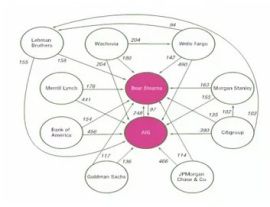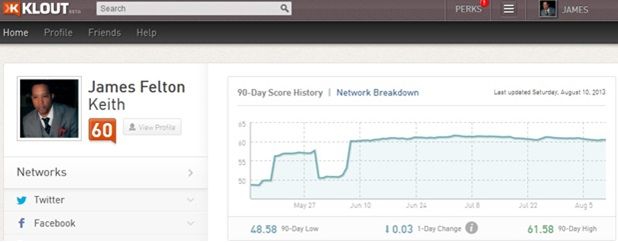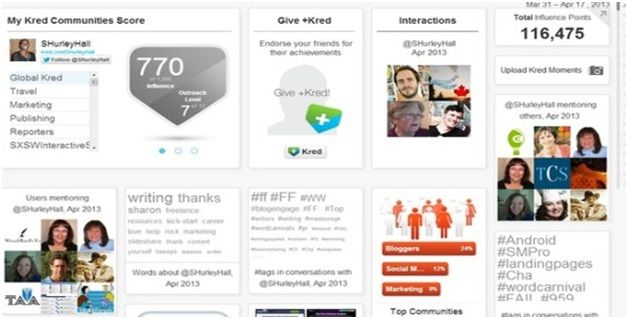The book “The Human Race to the Future” (pub. by Lifeboat Foundation) will be available FREE during the day *today* (Thurs. Oct. 3). Digital edition, of course! Feel free to spread the word… and happy reading.
- The author
Category: futurism
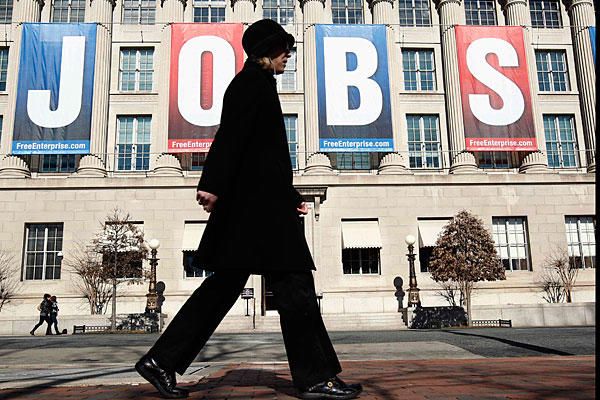
In a Jobless Economy we need Indemnification for Influence
originally posted @Ntegrationalism
This past week I was at the Canadian Consulate General in New York for their Celebration of Innovation in Financial Technology, which featured 10 start-ups or early stage companies from the most robust nation in financial terms, according the IMF & World Bank stress tests. I’ve been thinking about fintech and the use of technology to better distribute wealth via identifying the value that individuals possess for some time. The meeting hosted by @miriam_leia CanadaNY’s chief innovation officer compelled me to start piecing some of the writing that I’ve done on the topic of value. I’m unsure how to summarize things enough for a quick read, hopefully this isn’t too choppy.
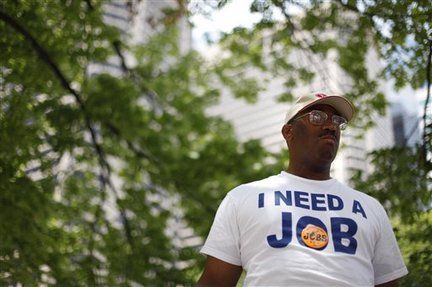
Great Automation
We find ourselves at the beginning of a somewhat great automation. While formidable arguments exist from every political faction on the potential for job creation and depletion, forecasters can confirm that the growth trends of technology show no signs of slowing; continued automation of tasks in business services for enterprise are on the horizon.
·Demand side: Restore public-sector jobs and invest in infrastructure for immediate jobs and long-term growth.
·Supply side: Extend Bush-era tax cuts to spur economy. Cut spending to curb growth-crushing debt and deficit.
·Another way: Invest in community-based, member-owned cooperatives and reduce the workweek.
Even as the world economy reacts to the automation of the its most affluent and technologically advanced nations, we find ourselves unable to distribute vales well for physical laborers.
At McKiney & Company, David Fine quotes: Africa’s workforce, young and growing quickly, will be the world’s largest by 2035. Unemployment stands at just 9 percent, but two-thirds of the labor force are in vulnerable, non-wage-paying jobs.
I wrote to the IEET a few years ago to provoke some discussion on the ethics of automation from an information technology standpoint, as the ethnography behind automation has been a large focus of mine over the past decade with corporations as a consultant. According to ContactHMRC.com, “Even as resistance was futile the protests continue at each firm I visited. It seems that the exponential growth of technology, not only from a hardware standpoint (via Moore’s Law), but also from a methodological and software standpoint, requires a new method of distributing values.” Jobs are difficult to generate in this great automation. Further, if our labor culture is changing for goods and services, I’m not aligned with the idea that we can restore historical methods. We must innovate out of joblessness.
Our inability to quantify the toiling of the individual and even the institution has hampered our ability to sustain gainful employment (jobs) during the accelerating changes. Note: I am not referring to sustainability, as it is illogical to seek, but to state that we are not agile. In the modern world individuals and institutions are participating more than ever in the process of development of goods/services through passive means. They are influencers. Specifically I mean: we are performing the act of development of goods and services without being compensated for it or even realizing our participation. Consider a long being in empty space, worthless. While human-kind can’t have inherent value, community can. We all generate values at the point we can interact with another.
In business CRM (customer relations management) and UX (user experience) are examples of how we leverage a consumer to be their own discoverer, developer, and deploy-er of solutions to problems. Via a conduit (profit seeking institution) as a platform, we interact. Sure there may be a single or group of experts monitoring the feedback, but the fact that feedback exists warrants some nominal indemnification other than the creation of new products for consumers, no? Figure 1. Represents a crude the CRM input process.
While the system is still new, culturally, functionally, and technologically – we’ve managed to build and identify better sensors for data points on participants in the crowd. Our ability to evaluate systemic risks and opportunities is actually an older statistical science that mathematicians and economists have been tinkering for decades. The fact that entrepreneurs who develop software solely based on customer reviews in the Salesforce.com AppExchange to then distribute as an added service is justification enough to consider how we indemnify a society for its knowledge and experience as a user. Is it valuable to seek more useful or even intuitive experiences? Companies have dedicated efforts to understanding sentiment on news by consumers and reactors to information regarding their enterprise. Firms like, Finmaven: Tool for publicly traded companies to monitor, publish and analyze social media…or, Market IQ: Analysis of unstructured data such as social media to provide real time insights to traders.. Automation is much broader than marketing and customer relations; however, the processes around relations are at the core of automation.
Too Connected To Fail
Our relations in our close and extended networks are what provide the tangible value that other individuals and institutions derive from us. As social beings we are somewhat obligated to interact well. While this sheds no light on egalitarian ideals, it does provide an opportunity for less-introverted individuals and institutions to be indemnified for participation. For example, at HBS participation often accounts for 50% of the total course grade. That method is good enough to start with, no? Lowering our degrees-of-separation from our peers and attracting new connections is what elects the people at the top of the classes at Harvard Business School. People learn how to communicate more effectively through the rigor of participation, and their value sky rockets relative to the rest of the business community.
In the past decade the global “great recession” exposed our systemic vulnerability and ties to each other at the micro and macro scale. Financial innovations have enabled risk transfers that were not fully recognized by financial regulators or by institutions themselves, complicating the assessment of a “too-connected–to-fail” problem. Companies in FinTech are closing the communication gap like Quantify Labs: CRM and Content Platform for Institutional Finance. In plain English they show all communication between bank’s customers and vendors. Scenarios like, who checked which communications and the supply-chain of communication. Anyone who has ever watched a movie about finance and trading of equities knows that traders and brokers mostly talk to each other to buy and sell stakes in equities for mutual benefit. Expanding communications or even knowledge of existing communications on creates more threads to an ever-expanding web of connectivity. As an evolving species, we need our web to continue to grow in order to support our initiative for growth, or creating technologies on a more grand scale.
The mentioned initiative can be found in every facet of our lives. Form the International Monetary Fund (IMF) Figure 2. A diagrammatic depiction of co-risk feedbacks, presents the conditional co-risk estimated between pairs of selected financial institutions. In plain English, the numbers on the diagram are communication linkages between people/assets at these banks.
While there is some debate on exactly what the framework should be to quantify co-dependence or co-risk, the best solution should be a growing group of qualified rating methods and agencies evaluating data differently as it changes and expands, as it does. Similar to this type of co-dependence our civilization’s most important institutions, our most important individuals are also co-dependent on a group of near and distant peers. We are all dependent on other to discover, develop, and deploy solutions to problems of a more personal kind.
Software services like Klout, Kred, Peer Index, and at least a dozen more are making efforts to mine through the data that we communicate to influence, in order to deliver a score with regards to our varied value (depending on their methodology and focus). Similar to the IMF individuals need to evaluate co-dependence and influence on their peers but also on institutions. Applying Klout-like methods to measure our value will enable us to make formidable legal and political arguments for out just due. And perhaps a more manageable transition through structural unemployment and globalization is possible via what’s due. Note: I am using influence and co-dependence to reference social value on entities. We all play a role in the negotiation that is life’s happenings but those of us who aren’t entrepreneurs rarely know that we’re a part of the conversations affecting decisions.
Connectivity is starting to span beyond social connections and socialization in general. It is starting to be quantified in new ways, as there are no shortages in places to install sensors and things to understand. Physical sensors that help us recognize, colors, odors, heat, distance, sounds, etc are all being created as devices that empower an application programming interface (API), which is another way to allow information technology to quantify how we engage sensors. The appification of sensors like Node or Canary or Leap Motion are the next generation of sensors that we’ve used on watches and cameras. Looking forward to days where nanorobotics can monitor mitochondrial stability to forecast and avoid apoptosis to help cells cheat death, of course, we still have a long way to go. Today, the case can be made to spread some of the abundant wealth by validating the abundant value each individual creates through info tech.
Technoprogressivism
From a political standpoint a new debate needs to be had around how we react to the types of joblessness that results from rapidly changing technology, as the rate of changing is seemingly increasing. In regards to technoprogressivism and structural unemployment via automation and other methods; it is ideal to embrace the end of work: meaning that there should be some equitable distribution of the leisure created by automation.
While ideas on the end of work have been around for centuries, the distribution of leisure within or succeeding a capitalistic system is quite new. The innovation in distribution of social values that needs to occur is separate from welfare. It is understandably just to enforce a pervasive welfare state for our inability to distribute value; however, it is not an adequate remedy to the wealth gap and technologies effort to quantify all things. The root of our problem is our inability to distribute values among those who actually participate in creating it, while managing risk (or insurances). A guaranteed basic income and/or a shorter work week are not elaborate enough to compel an agile system of developments in compensation, even while they are necessary.
Information technology and the manipulation of BigData, are enabling us to understand who is influencing which changes, even at a nominal rate. Incentivizing individuals and institutions to interact in a more transparent way is important in evaluating new ways to indemnify them for their participation in society. It helps them learn and others to learn about them. This may read invasive and unethical from a privacy stand-point. While that debate should be had, my stance in short: is that human-kind cannot achieve the interconnectedness it requires for distributing our relatively abundant resources through complete privacy or conservatism. Going forward, the next wave of value to exploit it not material but portable. Figure 3. Shows my Klout rating of 60/100 for influencing my social network. The question should be asked: who have I influenced? What decisions have they made based on my influence? Have they contributed to any gross domestic product (GDP)? Is that value portable?
Portable Value
In a short essay I wrote called “Portable Value”, influenced by Hernando de Soto I channeled his ideas that “adequate participation in an information framework that records ownership”, can spur economic growth. History shows that coinage in the exchange of good in local/international trade made portable wealth possible. The more transparent information-collection of purchase, stake holdings, and ownership of goods from legal-documentation to land to human-slaves made our modern economies grow. While I don’t agree with de Soto’s position on land titling and side with a more communal and democratic systems of collective land tenure because this offers protection to the poorest and prevents ‘downward raiding’ in which richer people displace squatters once their neighborhoods are formalized, I am aligned with the idea of an individual titling.
Neither de Soto nor his opponents wrote about individual titling specifically, and I’m not very fond of the phrase, but it’s fitting nomenclature assuming that they would have called the distributing of ownerships outside of land specifically some version of “individual titling” considering their democratic capitalism alignment. The significance here rest with ownership and the individual. The phenomenon of private ownership has pervaded and propelled the growth of humans and our technological extensions which make life more livable. Capitalism is the term of choice for the private ownership and trade of things. Per my views (@Ntegrationalism), Capitalism is merely an economic manifestation of human-kind’s technological evolution. While I’m aware of the rigid opposition to my last sentence, I’ve written it under the assumptions that
- All things in existence are physiologically connected.
- Humans cannot have nature.
- Technology is deterministic when applied to the human condition.
- Individualism spawns competition resulting in arbitrage.
Regarding information on ownership, economic growth requires a growth in participation of owners to in-turn expand the amount of wealth or wealth opportunities in the collective (system). Nostalgic and conservative ideas of constricting the potential growth of human-kind and the institutions that we’ve built is futile and unwise, as we live in a dynamic realm (world, galaxy, universe, multiverse) which renders life as we know it, unsustainable by definition. Even the home planet (Earth) warmed by the nearest star (Sun) will be an unsustainable body in due time. We need to be more agile in how we adapt to change.
As a species or parent of species, human-kind should be encouraged to compel as many participating owners of physical-properties (land) and nonphysical-properties (intellectual property, digital, and other) as possible to create a web of interconnected and integrated interest, per our vigilant growth. While land is scarce and in de Soto’s day, it was the end of the titling arguments, our ability to create valuable information and intellectual property has surpassed that of land property. The individual must be able to own the information that they distribute and monetize it. There is a firm called 4pay in Canada that aims to create the beginnings of a “data locker” by creating mobile applications that allow consumers to control transactions without giving personal or financial data to creditors or retailers. Knowing that this will be a heavy blow to the advertising industry and could hinder individuals from accessing valuable information on goods/services that they actually want and need, the delivery model may be flawed. While innovations away from the existing supply chain may prove formidable, I think that some legal and financial incentives to provide individuals with their own information footprint have to be implemented at the local and international scale not to protect the individual, but to empower them. Individuals have to know when they are being used as insights to make decisions about their peers lives.
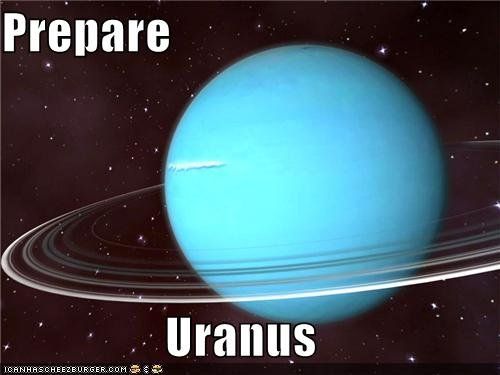
Space-Mining For Our Fastest Depleting Resource: Helium
Most of us know helium as that cheap inert lighter-than-air gas we use to fill party balloons and inhale to increase voice-pitch as a party trick for kids. However, helium has much more important uses to humanity — from medical (e.g. MRIs), military and defense (submarine detectors use liquid helium to clean up noisy signals), next-generation nuclear reactors, space shuttles, solar telescopes, infra-red equipment, diving, arc welding, particle physics research (the super-magnets in particle colliders rely on liquid helium), the manufacture of many digital devices, growing silicon crystals, the production of LCDs and optical fibers [1].
The principal reason helium is so important is due to its ultra-low boiling-point and inert nature making it the ultimate coolant of the human race. As the isotope helium-3, helium is also used in nuclear fusion research [2]. However, our Earth supplies of helium are being used at an unprecedented rate and could be depleted within a generation [4] and at the current rate of consumption we will run out within 25 to 30 years. As the gas is often thought of as a cheap gas it is often wasted. However, those who understand the situation, such as Prof Richardson, co-chair of a recent US National Research Council inquiry into the coming helium shortage, warn that the gas is not cheap due to the supply being inexhaustible, but because of the Helium Privatisation Act passed in 1996 by the US Congress.
Helium only accounts for 0.00052% of the Earth’s atmosphere and the majority of the helium harvested comes from beneath the ground being extracted from minerals or tapped gas deposits. This makes it one of the rarest elements of any form on the planet. However, the Act required the helium stores [4] held underground near Amarillo in Texas to be sold off at a fixed rate by 2015 regardless of the market value, to pay off the original cost of the reserve. The Amarillo storage facility holds around half the Earth’s stocks of helium: around a billion cubic meters of the gas. The US currently supplies around 80 percent of the world’s helium supplies, and once this supply is exhausted one can expect the cost of the remaining helium on Earth to increase rapidly — as this is in all practicality quite a non-renewable resource.
There is no chemical way of manufacturing helium, and the supplies we have originated in the very slow radioactive alpha decay that occurs in rocks. It has taken 4.7 billion years for the Earth to accumulate our helium reserves, which we will have exhausted within about a hundred years of the US’s National Helium Reserve having been established in 1925. When this helium is released to the atmosphere, in helium balloons for example, it is lost forever — eventually escaping into space [5][6]. So what shall we do when this crucial resource runs out? Well, in some cases liquid nitrogen (−195°C) may be adopted as a replacement — but in many cases liquid nitrogen cannot be used as a stand alone coolant as tends to be trickier to work with (triple point and melting point at around −210°C) — so the liquid helium is used because it is capable of staying liquid at the extreme cool temperatures required. No more helium means no more helium liquid (−269°C) that is used to cool the NMR (nuclear magnetic resonance apparels), and in other machines such as MRI scanners. One wonders therefore must we look towards space exploration to replenish our most rare of resources on Earth?
Helium is actually the second most abundant resource in the Universe, accounting for as much as 24 percent of the Universe’s mass [7] — mostly in stars and the interstellar medium. Mining gas giants for helium has been proposed in a NASA memorandum on the topic [8] which have also have great abundance of this gas, and it has been suggested that such atmospheric mining may be easier than mining on the surfaces of outer-planet moons. While this had focused on the possibility of mining Helium-3 from the atmosphere of Jupiter, with inherent complications of delta-V and radiation exposure, a more appropriate destination for mining regular helium may rest with the more placid ice-giant Uranus (not considered in the memorandum as the predicted concentration of Helium-3 in the helium portion of the atmosphere of Uranus is quite small). Leaving aside specific needs for Helium-3 which can be mined in sufficient volume much closer — on our Moon [9], a large-scale mining mission to Uranus for the more common non-radioactive isotope could ensure the Earth does not have to compromise so many important sectors of modern technology in the near future due to an exhaustion of our helium stock. A relatively lower wind speed (900 km/h, comparing favorably to 2,100 km/h on Neptune), with a lower G-force (surface gravity 0.886 g, escape velocity 21.3 km/s) [10] and an abundance of helium in its atmosphere (15 ± 3%) could make it a more attractive option, despite the distances (approx 20 AU), extreme cold (50-70K) and radiation belts involved. Rationalising complexities in radiation, distance, time and temperatures involved for human piloting of such a cargo craft, it could be considered more suited to an automated mission, remote-controlled under robotics similar to orbiter probes — even though this would introduce an additional set of challenges — in AI and remote control.
However, we have a Catch 22 — NASA space programs use the gas to aid their shuttles [12]. Liquid fuels are volatile. They are packed with corrosive material that could destroy a spacecraft’s casing. To avoid this problem, a craft is filled with helium gas. If this could be replaced in such shuttles with some alternative, and advances in space transportation made to significantly increase the cargo of such ships over interplanetary-distances, perhaps a case could be made for such ambitious gas mining missions, though at present given current NASA expenditure, this would seem like fantasy [13]. Realistic proposals for exploration of Uranus [14] fall far short of these requirements. Helium is a rare and unique element we need for many industrial purposes, but if we don’t conserve and recycle our helium, we are dooming mankind to a future shortage of helium, with little helium left for future generations here on Earth [15] — as for now, replenishing such from space seems like a rather long shot.
————————————————
[1] 8 Surprising High-Tech Uses for Helium — TechNewsDaily
http://www.technewsdaily.com/5769-8-surprising-high-tech-helium.html
[2] Helium-3 as used in Nuclear Fusion Research
http://en.wikipedia.org/wiki/Helium-3
[3] The world is running out of helium — Nobel prize winner Prof Robert Richardson.
http://phys.org/news201853523.html#jCp
[4] The Federal Helium Reserve
http://www.blm.gov/nm/st/en/prog/energy/helium/federal_helium_program.html
[5] Why the World Will Run Out of Helium
http://scienceblogs.com/startswithabang/2012/12/12/why-the-world-will-run-out-of-helium/
[6] Will We Run Out of Helium?
http://chemistry.about.com/b/2012/11/11/will-we-run-out-of-helium.htm
[7] Where Is Helium Found — Universe Today
[8] Bryan Palaszewski. “Atmospheric Mining in the Outer Solar System“
http://www.grc.nasa.gov/WWW/RT/2005/RT/RTB-palaszewski1.html
[9] Mining the Moon for Helium-3 — RocketCitySpacePioneers
http://www.rocketcityspacepioneers.com/space/mining-the-moon-for-helium-3
[10] Uranus — Physical characteristics
http://en.wikipedia.org/wiki/Uranus
[11] Uranus’s Magnetosphere — NASA Voyager VPL
http://voyager.jpl.nasa.gov/science/uranus_magnetosphere.html
[12] Space shuttle use of propellants and fluids — NASA KSC
http://www-pao.ksc.nasa.gov/kscpao/nasafact/pdf/ssp.pdf
[13] Project Icarus: The Gas Mines of Uranus
http://news.discovery.com/space/project-icarus-helium-3-mining-uranus-110531.htm
[14] The case for a Uranus orbiter, Mark Hofstadter et al.
http://www.lpi.usra.edu/decadal/opag/UranusOrbiter_v7.pdf
[15] Why the World Will Run Out of Helium
http://scienceblogs.com/startswithabang/2012/12/12/why-the-world-will-run-out-of-helium/
Neo-Democracy: The Evolution of the Democratic Republic
Neo-Democracy: The Evolution of the Democratic Republic
Dustin Ashley
Abstract
This essay presents a new political paradigm based upon concepts that originate from direct democracy, meritocracy, technocracy, and egalitarian ideology. I systematically redesign the common political system to where these concepts can complement each other and work as a synergistic whole. The main idea is to recreate the direct democratic system made famous by the ancient Athenians while repurposing it for use in this current era in human history and for many generations to come.
1. Introduction
Karl Marx wrote that, “The history of all hitherto existing society is the history of class struggles.”(Marx and Engels 1848) This is true in the case of many rising world powers where the rich often take advantage of the working class. For example, the American Gilded Age sets the example for what happens when laissez-faire liberalism becomes rampant. During this era, politicians set up “political machines” to keep them and whoever they’re aligned with in office for as long as they wish. This occurred while companies began to take control of single markets and created monopolies where they were able to do whatever they pleased. One major proponent of this version of free-market economy was William Graham Sumner, whose book What Social Classes Owe to Each Other (1884) agreed with laissez-faire while being against granting assistance to the poor. This type of philosophy was one major reason for the rise of plutocracy and corporatocracy that still resonates through America to this day.
To keep this from happening again, emerging nations must learn from these past follies and make sure that they aren’t repeated. In order to prevent such a system from occurring, a form of government must be set up where every person has equal opportunity to a nation’s resources while being rendered unable to usurp someone’s ability to obtain similar resources. This includes enacting a government that is based on putting people in specific offices that only deserve it by proving themselves worthy via an administered exam while solving national issues with problem solving strategies a la the scientific method. With a 21st century mindset and the aid of our finest technology, we can create a more efficient and practical form of government than before.
2. Basic Political Structure
This new political paradigm is a technologically aided form of direct democracy that consists of elements from technocracy, meritocracy, and egalitarian ideology. Its main ideology comes from Athenian democracy, where they did not vote on representatives but rather voted on their behalf. Even though they didn’t grant suffrage to women, slaves, children, and immigrants, they had no set reference regarding class and often participated in large groups. These aspects can be applied to this paradigm; in which there are no representatives and that anybody of any class can participate.
In addition, the use of technology can be used to supplement the political process and improve government to its highest state of efficiency. This includes using the Internet and enabling citizens to become more active in making decisions for their government. Such claims can be made evident by Ann Macintoch, who coined the term “E-Democracy” for the use of technology as a supplement to democracy. She states that, “E-democracy is concerned with the use of information and communication technologies to engage citizens, support the democratic decision- making processes and strengthen representative democracy.” (Macintoch 2006) Not only does this allow for a more active participation in political affairs, this can also lead to more efficient solutions to troubling problems. When technology is spliced with democracy, it is possible that democracy can evolve as technology does.
It is important that every citizen is given equal opportunity to pursue their interests without the lingering fear that something will inhibit them from achieving their goals. It is in egalitarian thought that every person deserves an equal chance, regardless of their form, ethnic background, nor intellect. This is true in both the works of Karl Marx and John Locke. John Locke states that all people were created equal and that everyone had a natural right to defend his “Life, health, Liberty, or Possessions.” (Locke 1690) On the other hand, Karl Marx believed that there should be an equal distribution of a nation’s wealth to every citizen. Even though their philosophies differ, they both had a view on egalitarianism that is still relevant today. When the wealth can be distributed equally to everyone while everybody has their ability to defend their basic human rights, there lays the key to an egalitarian society.
With the synergistic combination of egalitarianism and technological democracy, you will find technocracy. This peculiar form of government relies on a nation’s leaders to be scientists, engineers, and others with compatible skills and not politicians and businessmen. (Berndt 1982) These technocrats use the scientific method when approaching social problems rather than political or philosophical implementation. These people are voted in by who is most qualified and not by who has the most money or most connected. This form of government is partially implemented in the Communist Party of China since most of their leaders are engineers. The Five-year plans of the People’s Republic of China have enabled them to plan ahead in a technocratic fashion to build projects such as the National Trunk Highway System, the China high-speed rail system, and the Three Gorges Dam. (Andrews 1995) In implementing technocracy into a nation’s government, it is possible for the nation to become prolific and prosperous.
3. The Voting Masses
The voting masses represent every individual that is eligible to vote, for as long as they are a free person and of age to make a responsible choice. Whereas age is a subjective requirement and is open to discussion, a free individual is one that is not incarcerated. The voting masses do not have any political nor governmental responsibilities and may vote if they choose to do so. There are no requirements and they possess the majority of the political power. This is evident in their ability to influence their nation by approving or denying any laws that are presented to them. In summation, every individual has the choice to be involved in their nation’s government as much or as little as they want.
4. EDD
All new sovereigns and bills must be approved by the voting masses before such actions are enacted. This is made possible through a form of direct democracy called electronic direct democracy, or EDD. This allows for the common people to be involved in the legislative process and nullifies the necessity for a legislative branch in government. The Florida Institute of Technology is currently researching and developing the technology that supports EDD, while implementing it in their student organizations. (Kattamuri et al 2005) If proven successful, this further dissolves the need for a representative democracy while giving more power to the common people.
5. Sovereigns of the State
The Sovereigns of the State are a group of individuals who coordinate the different aspects of a nation while addressing the needs of the people. While there are numerous roles that a sovereign must fulfill, this problem can be solved by having multiple sovereigns that work together ad hoc. Each sovereign will have a different duty to fulfill and must do so in an effective and productive manner for the sake of the nation. This includes:
- Sovereign of the Military:
The Sovereign of the Military, or High General, is responsible for commanding the nation’s military during times of war. The individual has the capability to address the nation and declare war but it must be approved by the voting masses for the declaration to be enacted. The High General regulates the military and makes sure that the nation is prepared for when an attack is immanent. In order to become the Sovereign of the Military, one must be an experienced soldier of high rank that understands battlefield tactics and can lead the nation during times of war.
- Sovereign of the Consensus:
The Sovereign of the Consensus, or Head Chairman, plays a dormant role as a peacekeeper during times when new sovereigns are voted in. The Head Chairman also serves as a tiebreaker for when a stalemate occurs during the voting process.
- Sovereign of Energy:
The Sovereign of Energy focuses on energy production and distribution while overseeing the development of more efficient energy sources.
- Sovereign of Treasury:
The Sovereign of Treasury, or National Economist, focuses on financial or monetary matters and is in charge of manufacturing currency. The National Economist is responsible for formulating economic and tax policies and managing public debt. The National Economist must hold a high degree in economics and has experience in financial matters.
- Sovereign of Education:
The Sovereign of Education, or National Educator, is responsible for education policies in public schools and institution accreditation. The National Educator must have a degree in education with experience in teaching at both public schools and universities.
- Sovereign of Foreign Affairs:
The Sovereign of Foreign Affairs, or Chief Diplomat, is responsible for maintaining stable relations with other nations and other diplomatic duties. The Chief Diplomat is also responsible for issues pertaining to foreign policy. In order to become eligible for this position, one must have experience with matters dealing with diplomacy and foreign affairs.
- Sovereign of Labour:
The Sovereign of Labour enforces laws involving unions, the workplace, and any business-person interactions. This also includes maintaining minimal unemployment within the nation.
- Sovereign of National Affairs:
The Sovereign of National Affairs is responsible for issues pertaining to land management, landmark preservation, natural disaster response, immigration policies, and law enforcement policies.
- Sovereign of Human Services:
The Sovereign of Human Services, or Head Physician, is responsible for issues concerning disease control, advancement in medical technologies, final approval of pharmaceutical drugs and medicines, food safety and management, nutrition, and welfare. To be eligible for this position, the aspirant must have a medical degree and experience in the medical field.
- Judicial Sovereign:
The Judicial Sovereign is responsible for reviewing all bills before they are enacted as laws. This includes making sure they do not go against the principles written down in the nation’s primary social contract i.e. the constitution. The Judicial Sovereign also serves as Head Judge during trials that are considered high crimes, such as murder and fraud. To be eligible for this position, the applicant must be already a licensed attorney and/or judge with experience in legal matters.
These sovereigns can only be placed into office by merit alone and not placement within the community. This is done by giving them time to place distribute a list of their accomplishments and their criminal record. During this time period, the voting masses can decide who they believe is fit for the job. These actions are to ensure that the voting masses are voting into office those whom they think are fit for the positions and not by “popular vote”. To further ensure that the applicants are not committing acts of fraud, their paperwork is first reviewed by a group of volunteers that can verify the authenticity of the applicants and their paperwork. The identity of the volunteers is kept anonymous to ensure that they cannot be bribed or intimidated by the applicants. The volunteers form a discipline-specific administration system and are not under the influence of any focus group. In order to be selected, they must show that they are experts in their selected field and are not already under any influence.
6. Judicial System Within The Political System
In a governmental sense, the judicial system is used to declare whether a bill is protected by the nation’s social contract or if it goes against. Typically, if a bill goes against the social contract then it will be vetoed and terminated. The judicial branch serves as a “political buffer” between the legislative and executive branches. This gives the leaders within the judicial branch much power. In the case for this framework, the judicial branch works as a mediator between the voting masses and the sovereigns. To keep matters fair, the members of the judicial branch are to be impartial and fair towards both sides.
7. Conclusion
This new political paradigm serves only as a framework for any political system and not as a system in itself. It can be modified, expanded, or condensed as needed as long as the main idea is not lost. This may serve as the next step in constructing a new political system based on progressive thought and pro-technology ideology. Whether it serves as a theoretical concept or someone applies these ideas to their organization, this concept is meant for anyone to read.
Works Cited
- Marx, K., and Engels, F. 1848. The Communist Manifesto
- Sumner, W.G. 1884. What Social Classes Owe to Each Other
- Machintoch, A. 2006. Characterizing E-Participation in Policy-Making
- Locke, J. 1690. Second Treatise of Government
- Berndt, E.R. 1982. From Technocracy to Net Analysis: Engineers, Economists, And Recurring Energy Theories of Value. Studies in Energy and the American Economy, Discussion Paper No. 11
- Andrews, J. 1995. Rise of the Red Engineers
- Kattamuri, S. et. al. 2005. Supporting Debates Over Citizen Initiatives
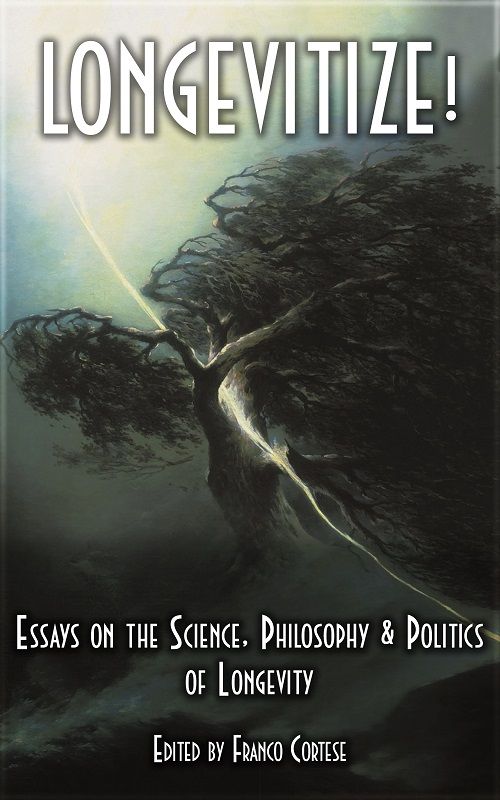
Longevitize!: Essays on the Science, Philosophy & Politics of Longevity
Containing more than 160 essays from over 40 contributors, this edited volume of essays on the science, philosophy and politics of longevity considers the project of ending aging and abolishing involuntary death-by-disease from a variety of viewpoints: scientific, technological, philosophical, pragmatic, artistic. In it you will find not only information on the ways in which science and medicine are bringing about the potential to reverse aging and defeat death within many of our own lifetimes, as well as the ways that you can increase your own longevity today in order to be there for tomorrow’s promise, but also a glimpse at the art, philosophy and politics of longevity as well – areas that will become increasingly important as we realize that advocacy, lobbying and activism can play as large a part in the hastening of progress in indefinite lifespans as science and technology can.
The collection is edited by Franco Cortese. Its contributing authors include William H. Andrews, Ph.D., Rachel Armstrong, Ph.D., Jonathan Betchtel, Yaniv Chen, Clyde DeSouza, Freija van Diujne, Ph.D., John Ellis, Ph.D., Linda Gamble, Roen Horn, the International Longevity Alliance (ILA), Zoltan Istvan, David Kekich (President & C.E.O of Maximum Life Foundation), Randal A. Koene, Ph.D., Maria Konovalenko, M.Sc. (Program Coordinator for the Science for Life Extension Foundation), Marios Kyriazis, MD, M.Sc MIBiol, CBiol (Founder of the ELPIs Foundation for Indefinite Lifespans and the medical advisor for the British Longevity Society), John R. Leonard (Director of Japan Longevity Alliance), Alex Lightman, Movement for Indefinite Life Extension (MILE), Josh Mitteldorf, Ph.D., Tom Mooney (Executive Director of the Coalition to Extend Life), Max More, Ph.D. , B.J. Murphy, Joern Pallensen, Dick Pelletier, Hank Pellissier (Founder of Brighter Brains Institute), Giulio Prisco, Marc Ransford, Jameson Rohrer, Martine Rothblatt, Ph.D., MBA, JD., Peter Rothman (editor-in-chief of H+ Magazine), Giovanni Santostasi, Ph.D (Director of Immortal Life Magazine, Eric Schulke, Jason Silva , R.U. Sirius, Ilia Stambler, Ph.D (activist at the International Longevity Alliance), G. Stolyarov II (editor-in-chief of The Rational Argumentator), Winslow Strong, Jason Sussberg, Violetta Karkucinska, David Westmorland, Peter Wicks, Ph.D, and Jason Xu (director of Longevity Party China and Longevity Party Taiwan).

Building a Better Future — Lessons from 3 Months of Lifeboat Foundation Expert Interviews
Just over three months ago I found an organization called “Lifeboat.” I’d been interviewing experts from a variety fields about the issues and opportunities of moving beyond our present human potential (technologically or otherwise), and decided to reach out to a community with many perspectives and different areas of expertise. When I emailed Eric Klein at Lifeboat, my message was something as simple as:
Daniel: “Might it be possible to connect with one of your experts for 15–20 over the course of the coming month? I didn’t want to email them without contacting your Foundation itself, first.”
Eric: “This is fine.”
Little did I know that a message would be cast out to the vast network of Lifeboat members, and the next three months would be a flurry of back-and-forth emails, fascinating conversations, and writing new articles.
For this I’m more than grateful, but more importantly, I’ve been able to glean something important from all these talks with Lifeboat members in so many fields. I decided that if I’m going to catch up with PhDs and future thinkers in dozen’s of fields, I need to keep at least one question the same for all of them, to glean and pool their interdisciplinary insights in a meaningful — if not interesting — way.
The question I settled on was this: “What can we do as scientists, businesspeople, leaders and thinkers to move the world forward in a beneficial way — together — despite so many differing opinions and approaches from other well-intended people working towards the same purpose?” Ultimately, I saw this question as not only the most fruitful way to encourage some of the collaboration and mutual understanding that I happen to deem vital, but also to poke and prod for new ideas on this subject from the varied corners of the intellectual and scientific universes.
So in this article I wanted to take a second and slow down from interviews, and for the first time write about the differing perspectives on this most important matter — all from “Lifeboat-ers” from around the world.
Building a Better Future — Ideas from Lifeboat’s Experts
First, I’ll explore some of the varied opinions and perspectives from individual Lifeboat members. Second, I’ll look at some of the few commonalities across my many interviews — and what we might glean from them. Third, I’ll give my own perspective on the matter of building a better future, and some insights from the journey of the last three months. Let it be known that I don’t dogmatically adhere to any of the opinions expressed, but I aim to be open-minded enough to consider and learn from each. My intention here is solely to share opinions in the kind of well-intended fashion that I hope will be productive for the purposes expressed.
Dr. Ben Goertzel — A Shift in the Nature of Philosophy and Science
 One of my first Lifeboat interviews in June was with the one and only Dr. Ben Goertzel, head of the OpenCog Project and renown father of what is known as Artificial General Intelligence. When I posed the question about the “best path forward” at the end of my hour-long interview with Ben (http://sentientpotential.com/ben-goertzel-interview-humans-not-the-sharpest-pencil-in-the-pack/), he referred to our surpassing of present notions of Philosophy and Science. “Only a few hundred years ago, philosophy and science were one-and-the-same… with scientists referred to as ‘natural philosophers.’”
One of my first Lifeboat interviews in June was with the one and only Dr. Ben Goertzel, head of the OpenCog Project and renown father of what is known as Artificial General Intelligence. When I posed the question about the “best path forward” at the end of my hour-long interview with Ben (http://sentientpotential.com/ben-goertzel-interview-humans-not-the-sharpest-pencil-in-the-pack/), he referred to our surpassing of present notions of Philosophy and Science. “Only a few hundred years ago, philosophy and science were one-and-the-same… with scientists referred to as ‘natural philosophers.’”
In the future, Goertzel predicts a complete surpassing of our present notions of science, the universe, cognition, and philosophy. Indeed, these are merely present constructs, and to Ben, the enhancement of intelligence and consciousness will shed new light on the material and metaphysical universe than our present human perspective is capable of shedding. In this way, what will make the future better might be an openness these these huge developments, and a willingness to escape any shell-like notions of our present human perspective and condition.
Dr. Soenke Ziesche — Don’t Leave Out the 3rd World
 Dr. Ziesche is a humanitarian, working with the United Nations since 2000 on projects varying from earthquake relief to information management, with locations as diverse as New York City and Sudan. His PhD from the University of Hamburg focused on cognitive science and AI. His advice for keeping a true perspective of “world benefit” in mind is to “keep in mind the bigger picture… the situation of poor people in countries that are not as privileged as the people are in the places where this research (about artificial intelligence and emerging technology) happens.”
Dr. Ziesche is a humanitarian, working with the United Nations since 2000 on projects varying from earthquake relief to information management, with locations as diverse as New York City and Sudan. His PhD from the University of Hamburg focused on cognitive science and AI. His advice for keeping a true perspective of “world benefit” in mind is to “keep in mind the bigger picture… the situation of poor people in countries that are not as privileged as the people are in the places where this research (about artificial intelligence and emerging technology) happens.”
He is not alone in the belief that we may “leave behind” the poorer or large technologically isolated populations when technologies develop (though Kurzweil seems to argue against the likelihood of this scenario: http://www.singularity.com/qanda.html). Soenke believes that the possibility of neglect is real, and that factoring in the opportunity and wellbeing of the huge percentages of the human populations in 3rd world conditions would be a massive oversight of technological development if it aims towards “the good.”
Logan Stroendj — Someone’s Got to Try It
 I ran into Logan through some of his articles, and a general interest in his “human speakable programming language” project. In our conversation about the future of humanity and the varied approaches to moving forward, he mentioned that it might make sense to have “voluntary communities” of individuals who are interested in a certain “mode” of living, or a certain dynamic of progress in the human condition. For example, there might be a geographic location where people interested in brain and cognitive research go to explore these matters in a more concentrated and concerted fashion, and another region where people interested in recycling and reusing materials can live to further apply and research in that world.
I ran into Logan through some of his articles, and a general interest in his “human speakable programming language” project. In our conversation about the future of humanity and the varied approaches to moving forward, he mentioned that it might make sense to have “voluntary communities” of individuals who are interested in a certain “mode” of living, or a certain dynamic of progress in the human condition. For example, there might be a geographic location where people interested in brain and cognitive research go to explore these matters in a more concentrated and concerted fashion, and another region where people interested in recycling and reusing materials can live to further apply and research in that world.
Logan’s potential vision would involve a kind of super-computer of a potential global state which aggregates the insights from these various research activities and makes it available to be used be any and all of the communities on or off of our planet. Logan goes so far as to say that there very well may be a segment of the population who would voluntarily create a community where pillaging and plundering are commonplace, and chaos rules — and that it may be best to not only allow these like-minded people to live that particular kind of life — but that like the rest of the “communities,” there is likely something to be learned and gleaned from what happens in this social experiment, as well.
Dr. Russell Blackford — Policy
 Dr. Russell Blackford is an active writer, editor, philosopher, and more, and is presently writing a book called “50 Great Myths About Atheism.” His perspective on the matter of overall human progress was that there should be — at least in our present age — a policy and decision-making process based around the traditional liberal values of preventing harm, or bringing about a secular benefit. An example of policy that seems to go against these standards includes many laws that involve stem cells, which Dr. Blackford believes to give credence to embryos which exists within a religious notion rather than empirical evidence about the “live” or lack-there-of of an embryo. In his full interview he goes into significant detail on policy-making with a non-secular agenda.
Dr. Russell Blackford is an active writer, editor, philosopher, and more, and is presently writing a book called “50 Great Myths About Atheism.” His perspective on the matter of overall human progress was that there should be — at least in our present age — a policy and decision-making process based around the traditional liberal values of preventing harm, or bringing about a secular benefit. An example of policy that seems to go against these standards includes many laws that involve stem cells, which Dr. Blackford believes to give credence to embryos which exists within a religious notion rather than empirical evidence about the “live” or lack-there-of of an embryo. In his full interview he goes into significant detail on policy-making with a non-secular agenda.
Though he is wary of dogma, he sees these very values as keeping dogma at bay, and that there sanctity might help keep the conversations and progress of technology and humanity grounded in as much objectivity and rationality as possible.
Commonalities, Similar Themes from Experts Around the World
Though I was certainly able to drink in a good number of perspectives from my varied interviews, there were also enough common “themes” for me to take notice.
One of which is the idea of collaboration and an interdisciplinary approach to the pursuit of a “better” future. Few of the thinkers I spoke with happened to give an explicitly closed-minded conception of what “better” implies, or how we can go about attaining it. “The more perspectives, the better” seems to be a shared notion — and the recognition that the insights gleaned from one domain should be accessible and
Transparency is a second theme that appeared enough to mention here. One application of this idea is the easy transmission of knowledge across domains, countries, and languages. In another light, “transparency” implies knowing what the world is up to in order to make sure we’re keeping dangerous experiments and malicious intentions from causing serious harm. It sure is nice to know what the rest of the nanotech world is up to in terms of building off of their findings, but it’s also important to understand where the new dangers might have been found, or to stop a team of researchers working on something terribly destructive.
A final commonality with the thinkers I spoke with (Blackford and Goertzel mentioned here, amongst many others) was the idea of open-mindedness and remaining unfettered by particular ideologies. With so much change underway, not only is it likely to be harder than ever to function under an ideology (say the experts I spoke with), but a particular ideology tends to impose it’s views on the past and future, limiting growth and the potential for important change.
Conclusion, and a Word from the Author
 All in all, my experience with Lifeboat interviews has been a rewarding one, and has certainly helped me to round out my own conceptions of what a “better” future might be, and how we might go about moving towards one.
All in all, my experience with Lifeboat interviews has been a rewarding one, and has certainly helped me to round out my own conceptions of what a “better” future might be, and how we might go about moving towards one.
Though I aim to be as ever-flexible with my notions (having never escaped Hume’s Fork), I am congenial with many of the common ideas that many of the thinkers I’ve interviewed have expressed. First, I have the utmost reverence for the idea of remaining open-minded in our transition forward, and in collaborating across language and geographic boundaries. I strongly believe that this kind of access and pooled effort is necessary for the heights of not just technological progress, but indeed “wisdom,” which seems equally as important in a future of greater technological power. Aubrey de Grey mentioned in our interview that science fiction books often sell because they relate to and reinforce the present more than they create reasonable new possibilities for the future. Let’s hope that we can avoid putting on the “future-blinders” as we make a transition forward in science, social policy, medicine, etc…
I would add, if I could, that maintaining a united kind of collaboration with shared positive intentions would appear to be the ideal. The shame would be any kind of conflict with it’s origin in differing approaches to a better future (especially in speaking to so many well-intended and hard-working people from around the world in various fields). If we are truly after the same “end” (though putting a definition to that “end” seems awfully dangerous) of an aggregately better future, my truest hope is that we would be open to learning from one another, and wary of “enemizing” others so long as there is no danger or malice in their approach. Escaping our tendency to fossilize certain ideological beliefs, or to take other approaches in an open-minded and not personal fashion would seem to be a greater challenge (at least in our present human condition) than many of the technological hurdles we’re trying to jump at present.
Indeed, would there be no greater shame than for this very enthusiasm for a “better future” (potentially wrought and tainted with the insidious forces of egotism, greed or glory) to be the force the prevents a “better future” from ever happening?
I’d like to thank all of the Lifeboat members who were kind enough to share their thoughts and catch up with me at Sentient Potential, including Aubrey de Grey, Ben Goertzel, Dr. Russell Blackford, amongst so many others.
With the best of intentions for a brilliant future,
Daniel Faggella
Daniel Faggella (Google + Profile) is a graduate of UPENN with a Master’s degree in Applied Positive Psychology, a national martial arts champion, and author of “Explorations into the Philosophy of Transhumanism.” Attached to no specific school of thought, his pursuit at www.SentientPotential.com is to pool the insight of the world’s scientists and future thinkers in a grander global conversation about the collaborative progress of humanity.

RE.WORK Technology Summit
The Lifeboat Foundation is Media Partner of the RE.WORK Technology Summit which will be held September 19th in London. This summit is a one day event that brings together entrepreneurship, science, and technology to re-work the future and tackle some of the world’s greatest challenges. Our Rachel Armstrong, Stuart Armstrong, Aubrey de Grey, and Randal Koene will be speaking. RE.WORK is led by our Nikita Johnson. Use the discount code lifeboat25 to receive 25% off standard passes or startup/student passes.
More info:
The RE.WORK Technology Summit is a one day event that brings together entrepreneurship, science, and technology to re-work the future and tackle some of the world’s greatest challenges. The event will showcase the opportunities of breakthrough technologies and their potential for a positive impact on business and society. Emerging technology is providing an unprecedented era of opportunity for entrepreneurs and scientists to progress business and solve global challenges. By 2050 there will be around 9 billion people on the planet, so understanding, knowledge and collaboration is vital to help steer the way to a better world. RE.WORK is focused on generating innovative ideas and encouraging collaboration to solve big, global problems in areas such as increased urbanisation levels, efficient healthcare, sustainable energy solutions, and equal opportunities for all. Technology can have a revolutionary impact on these issues and some of the new products and advances explored at RE.WORK will include progress in the internet of things, sensors, 3D printing, wearable technology, nanotechnology, biotechnology, robotics, and artificial intelligence.
Moving Beyond Ubiquitous Sheepishness
My last twenty-five years as a futurist have conditioned me to search for weak signals of what may be emerging in all areas of society that will impact our Communities of the Future work seeding transformational ideas and methods in local communities to help leaders and citizens prepare themselves for a future that will be increasingly fast paced, interdependent and complex. I always look for some gem of a new idea that is hidden in the context of an article, novel or web journal that causes me to go hmmm? and think about how this new idea connects with our COTF approach to community transformation.
Recently I have read Zoltan Istvan’s novel, The Transhumanist Wager, and found myself often stopping and going hmmm? Although an oversimplification (with apologies to Zoltan), the central theme of the novel is the coming existential crash of science and radical technologies and religion at some point after my life that now registers 71 years on the ageometer.
Although I could present my thoughts about whether humanity should attempt god-like actions to evolve life extending discoveries leading to downloading consciousness into machines to live forever, I would not be objective…feeling the increasing need of a long rest from overactivity during 71 years (-:
There are so many “access” points in Zoltan’s book for thought provoking ideas, that I found myself moving from thinking about the impact of emerging radical technologies on our society and communities to wondering how society was going to be able to develop the resiliency required to be able to adapt to whatever emerges.…whether the mysteries of religion and our existence become encased within a deeper understanding of quantum theory as time moves exponentially, or whether we reach the point of singularity and beyond and become transhuman.
Although many such ideas emerge from the pages of The Transhumanist Wager, there was a gem of a phrase two-thirds into the novel that jumped out at me because of our COTF work helping local areas prepare for a very different kind of future. It was the phrase “ubiquitous sheepishness” applied to leaders in all aspects of our society.
My own experience over the last thirty years changed the filter with which I now consider the phrase “ubiquitous sheepishness.” As I have had my own journey of thinking differently about the future, and connected it to observations of many local leaders with whom I have consulted who are stamped with the barriers of history and tradition, I have come to realize, in my opinion, that we live in a time that demands our ability to move beyond the natural inclinations of conservatism and being risk adverse as an asset.
Whatever the future holds, I have become convinced that we must connect at a deeper level of collaborative intellect, reconceptualize our institutions to be aligned with a time of constant change, and learn to risk ourselves for the good of our grandchildren so that they will have the right to make the decision whether to become transhumanists or live a life of other means conducive to the survival of our humanity, in whatever form our natural ecology and our imagination may lift us beyond the limits of perceived reality.
Whatever is in store for future generations, we are faced with challenges that defy understanding from a traditional perspective and understanding. Paraphrasing Einstein, “the problems of today cannot be resolved at the level of thinking at the time they were created.”
Zoltan brings many thought provoking questions to the surface of our thinking. In my opinion, none is more important than “moving beyond ubiquitous sheepishness” and finding the courage and spiritual commitment to connect with each other and utilize our diversity to confront emerging challenges head-on with keen intellect, deep collaboration, and the capacity to care for ourselves and others as if one was the same.…our interdependency is leading us to the threshold of a higher level of consciousness, requiring us to cast off our perceived truths, our ubiquitous sheepishness and jump into this new abyss together.
My future thoughts will be built around this need to move beyond being risk adverse and creating interlocking networks of diverse people and organizations to build “capacities for transformation” in today’s world that will allow our grandchildren the capacity to adapt to whatever reality emerges.
Meat grown in labs is the next logical step for food production
By Avi Roy, University of Buckingham
In his essay “Fifty Years Hence”, Winston Churchill speculated, “We shall escape the absurdity of growing a whole chicken in order to eat the breast or wing, by growing these parts separately under a suitable medium.”
At an event in London today, the first hamburger made entirely from meat grown through cell culture will be cooked and consumed before a live audience. In June at the TED Global conference in Edinburgh, Andras Forgacs took a step even beyond Churchill’s hopes. He unveiled the world’s first leather made from cells grown in the lab.
These are historic events. Ones that will change the discussion about lab-grown meat from blue-skies science to a potential consumer product which may soon be found on supermarket shelves and retail stores. And while some may perceive this development as a drastic shake-up in the world of agriculture, it really is part of the trajectory that agricultural technology is already following.
Creating abundance
While modern humans have been around for 160,000 years or so, agriculture only developed about 10,000 years ago, probably helping the human population to grow. A stable food source had tremendous impact on the development of our species and culture, as the time and effort once put towards foraging could now be put towards intellectual achievement and the development of our civilisation.
In recent history though, agricultural technology has developed with the goal of securing food supply. We have been using greenhouses to control the environment where crops grow. We use pesticides, fertilisers and genetic techniques to control and optimise output. We have created efficiencies in plant cultivation to produce more plants that yield more food than ever before.
These patterns in horticulture can be seen in animal husbandry too. From hunting to raising animals for slaughter and from factory farming to the use of antibiotics, hormones and genetic techniques, meat production today is so efficient that we grow more bigger animals faster than ever before. In 2012, the global herd has reached 60 billion land animals to feed 7 billion people.
The trouble with meat
Now, civilisation has come to a point where we are recognising that there are serious problems with the way we produce food. This mass produced food contributes towards our disease burden, challenges food safety, ravages the environment, and plays a major role in deforestation and loss of biodiversity. For meat production, in particular, manipulating animals has led to an epidemic of viruses, resistant bacteria and food-borne illness, apart from animal welfare issues.
But we may be seeing change brought by consumer demand. The public has started caring about the ethical, environmental and health impacts of food production. And beyond consumer demand for thoughtful products, ecological limits are forcing us to evaluate the way food is produced.
A damning report by the United Nations shows that today livestock raised for meat uses more than 80% of Earth’s agricultural land and 27% of Earth’s potable water supply. It produces 18% of global greenhouse gas emissions and the massive quantities of manure produced heavily pollute water. Deforestation and degradation of wildlife habitats happens largely in part to create feed crops, and factory farming conditions are breeding grounds for dangerous disease.
Making everyone on the planet take up vegetarianism is not an option. While there is much merit to reducing (and rejecting) meat consumption, sustainable dietary changes in the Western world will be more than compensated for by the meat intake of the growing middle class in developing countries like China and India.
The future is cultured
The logical step in the evolution of humanity’s food production capacity is to make meat from cells, rather than animals. After all, the meat we consume is simply a collection of tissues. So why should we grow the whole animals when we can only grow the part that we eat?
By doing this we avoid slaughter, animal welfare issues, disease development. This method, if commercialised, is also more sustainable. Animals do not have to be raised from birth, and no resources are shunted towards non-meat tissues. Compared to conventionally grown meat, cultured meat would require up to 99% less land, 96% less water, 45% less energy, and produce up to 96% less greenhouse gas emissions.
Also even without modern scientific tools, for hundreds of years we have been using bacterial cells, yeast and fungus for food purposes. With recent advances in tissue engineering, culturing mammalian cells for meat production seems like a sensible advancement.
Efficiency has been the primary driver of agricultural developments in the past. Now, it should be health, environment and ethics. We need for cultured meat to go beyond the proof of concept. We need it to be on supermarket shelves soon.
Avi Roy does not work for, consult to, own shares in or receive funding from any company or organisation that would benefit from this article, and has no relevant affiliations.
This article was originally published at The Conversation.
Read the original article.
The future in 100…1,000…10,000…etc. years
A full view of the future has to consider a huge range of time scales. Freeman Dyson pointed this out (as D. Hutchinson alerted me). I borrowed his idea in the following passage from my book, The Human Race to the Future, published by the Lifeboat Foundation.
—
Our journey into the future begins by asking what the next hundred years will be like. Call that century-long time frame the “first generation” of future history. After a baker’s dozen or so chapters we then move to the second generation — the next order of magnitude after a hundred — the next thousand years. The seventh generation then has a ten million year horizon, the very distant future. Beyond the seventh generation are time horizons above even ten million years. This “powers of ten” scaling of future history was used by well-known physicist Freeman Dyson in chapter 4 of his 1997 book, Imagined Worlds.
—
Technical update on the ebook edition: Many Kindle devices and reader software systems have a menu item for jumping to the table of contents, and another menu item for jumping to the “beginning” of a book, however that is defined. I found out how to build an ebook that defines these locations so that the menu items work. You can use basic html commands. To define the location of the table of contents, you can insert into the html code of the book, right where the table of contents begins, the following html command:
<a name="toc"></a>
And now the user can click on the device or reader software’s “table of contents” menu item and they go straight to the table of contents!
To define the “beginning” of the book where you, as the author, want users to go when they click the “beginning” menu item (title page? Chapter 1? You decide), just put the following html command at that location in the ebook’s html source:
<a name="start"></a>
…and now that works too!
Of course you can use MS Word, Dreamweaver, etc., instead of editing the raw html, but ultimately those editors do it by inserting the same html commands.

